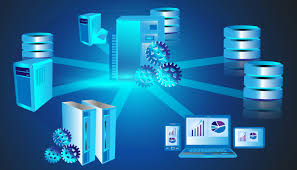
The ultimate goal of a Database Management Systems (DBMS) is to store and transform data into information to support making effective decisions.
The world of data is constantly changing and evolving every second. This, in turn, has created an entirely new dimension of growth and challenges for organizations and companies around the globe.
A Database Management System (DBMS) is a sophisticated piece of system software consisting of multiple integrated components that deliver a consistent, managed environment for creating, accessing and modifying databases.
DBMS is basically used to manage the database (an organized collection of data or records, generally stored and accessed electronically from a computer system). And also, the data can be easily accessed, modified, updated, controlled, and organized.
Database plays an important role in an organization. This is because a good database system would bring rapid progress in the organization. The importance of a database for an organization are:
• Simplify the search and utilization of information of an organization.
• Enable the organizing of data that is owned by the organization such as employee’s/ members bios of the organization, consumer biodata, client’s biodata, list of products, payment of salaries, payment of bills, and others.
• The database can help in determining better strategies for the advancement of an organization’s future.
• With a database of all the information, the organization can be well organized so that it can be accessed quickly and easily without spending much money (saving on the operating costs of the organization).
DBMS are, therefore, crucial links in the creation and management of data needed for the effective running and management of data, and also helps organizations to transfer the said data through the entire system.
DBMS provides the following functions:
• Concurrency: Concurrent access (meaning ‘at the same time’) to the same database by multiple users. A DBMS allows for concurrent access by multiple users, each with their own specific role. Some users only need to view the data, some contribute to adding new data, while others design and manage the database – all at the same time!
• Security: A DBMS increases security and reliability. Security rules to determine access rights of users. Any data can only be accessed or manipulated by those who were given the authority to provide login and password for each data.
• Back-up and recovery: Processes to back-up the data regularly and recover data if a problem occurs.
• Integrity: Database structure and rules improve the integrity of the data.
• A DBMS provides automated methods to create, store and retrieve data. It may take some time to set up these methods, but once in place, a DBMS can make tedious manual tasks a thing of the past.
DBMS can improve your data processes and increase the business value of the organization’s data assets, freeing users across the organization from repetitive and time-consuming data processing tasks. The result? A more productive workforce, better compliance with data regulations, and better decisions.

I really like what you guys are up too. This sort of clever work and coverage!
Keep up the wonderful works guys I’ve included you guys to blogroll.
Also visit my blog post – basement finishing company